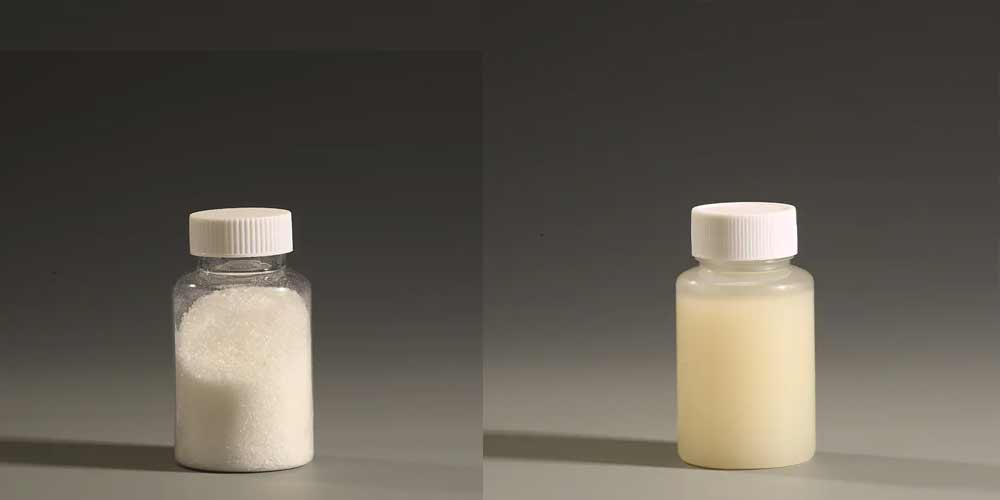Polyacrylamide(PAM) hangata e ka aroloa ho anionic, cationic, le nonionic ho latela mofuta oa ion. E sebelisoa haholo-holo bakeng sa flocculation kalafo ea metsi. Ha u khetha, mefuta e fapaneng ea metsi a litšila e ka khetha mefuta e fapaneng. U lokela ho khetha PAM e nepahetseng ho ea ka litšobotsi tsa likhoerekhoere tsa hau. Ka nako e ts'oanang, o lokela ho hlakisa hore na polyacrylamide e tla ekeletsoa ka mokhoa ofe le morero oo u batlang ho o finyella ka ho e sebelisa.
The botekgeniki litsupa tsa polyacrylamide ka kakaretso akarelletsa boima ba molek'hule, tekanyo ea hydrolysis, ionicity, viscosity, mesaletsa monoma dikahare, joalo-joalo matšoao ana a lokela ho hlakisoa ho ea ka metsi a litšila u tšoara.
1. Boima ba molek'hule / viscosity
Polyacrylamide e na le mefuta e fapaneng ea boima ba limolek'hule, ho tloha tlase ho ea holimo haholo. Boima ba limolek'hule bo ama ts'ebetso ea li-polymer lits'ebetsong tse fapaneng. Polyacrylamide e phahameng ea boima ba limolek'hule hangata e sebetsa hantle haholo ts'ebetsong ea flocculation hobane liketane tsa tsona tsa polymer li telele 'me li ka kopanya likaroloana tse ngata hammoho.
Viscosity ea tharollo ea PAM e phahame haholo. Ha ionization e tsitsitse, boima bo boholo ba limolek'hule tsa polyacrylamide, bo boholo ba viscosity ea tharollo ea eona. Sena ke hobane ketane ea macromolecular ea polyacrylamide e telele ebile e tšesaane, 'me ho hanyetsa ho sisinyeha ha tharollo ho kholo haholo.
2. Tekanyo ea hydrolysis le iocity
Ionicity ea PAM e na le tšusumetso e kholo ts'ebetsong ea eona ea ts'ebeliso, empa boleng ba eona bo nepahetseng bo itšetlehile ka mofuta le mofuta oa thepa e phekoloang, 'me ho na le litekanyetso tse fapaneng tse nepahetseng maemong a fapaneng. Ha matla a ionic a thepa e phekoloang e phahame (lintho tse ling tse sa tloaelehang), ionicity ea PAM e sebelisitsoeng e lokela ho ba e phahameng, ho seng joalo e lokela ho ba e tlaase. Ka kakaretso, tekanyo ea anion e bitsoa tekanyo ea hydrolysis, 'me tekanyo ea ion hangata e bitsoa tekanyo ea cation.
Mokhoa oa ho khetha polyacrylamideho itšetlehile ka bongata ba li-colloid le lintho tse tiileng tse emisitsoeng ka metsing. Ka mor'a ho utloisisa matšoao a ka holimo, mokhoa oa ho khetha PAM e loketseng?
1. Utloisisa mohloli oa likhoerekhoere
Taba ea pele, re tlameha ho utloisisa mohloli, tlhaho, sebopeho, litaba tse tiileng, joalo-joalo tsa seretse.
Ka kakaretso, cationic polyacrylamide e sebelisoa ho phekola seretse se phelang, 'me anionic polyacrylamide e sebelisetsoa ho phekola seretse sa inorganic. Ha pH e phahame, cationic polyacrylamide ha ea lokela ho sebelisoa, 'me ha , anionic polyacrylamide ha ea lokela ho sebelisoa. Asiti e matla e etsa hore ho se be molemo ho sebelisa anionic polyacrylamide. Ha litaba tse tiileng tsa sludge li phahame, palo ea polyacrylamide e sebelisoang e kholo.
2. Khetho ea iocity
Bakeng sa sludge hore lokela ho dehydrated ka kalafo likhoerekhoere, o ka khetha flocculants le ionicity fapaneng ka liteko tse nyenyane ho khetha polyacrylamide loketseng ka ho fetisisa, e leng se ka finyella molemo ka ho fetisisa flocculation e le hantle le ho fokotsa litekanyetso li behoa, ho boloka ditjeo.
3. Khetho ea boima ba molek'hule
Ka kakaretso, ha boima ba limolek'hule ba lihlahisoa tsa polyacrylamide bo phahame, ho na le viscosity e kholoanyane, empa ha e sebelisoa, boima ba limolek'hule ba sehlahisoa bo tla ba betere. Ka tšebeliso e khethehileng, boima bo nepahetseng ba limolek'hule tsa polyacrylamide bo lokela ho khethoa ho latela indasteri ea sebele ea kopo, boleng ba metsi le thepa ea phekolo.
Ha u reka le ho sebelisa PAM ka lekhetlo la pele, ho kgothaletswa ho fana ka boemo bo itseng ba likhoerekhoere ho moetsi oa flocculant, 'me re tla u khothalletsa mofuta o loketseng oa sehlahisoa bakeng sa hau. Le lisampole tsa poso bakeng sa liteko. Haeba u na le phihlelo e ngata ea ho hloekisa likhoerekhoere, u ka re bolella litlhoko tsa hau tse khethehileng, masimo a kopo, le mekhoa, kapa ka ho toba u re fe lisampole tsa PAM tseo u li sebelisang hona joale, 'me re tla u bapisa le polyacrylamide e nepahetseng.
Nako ea poso: Jul-15-2024


